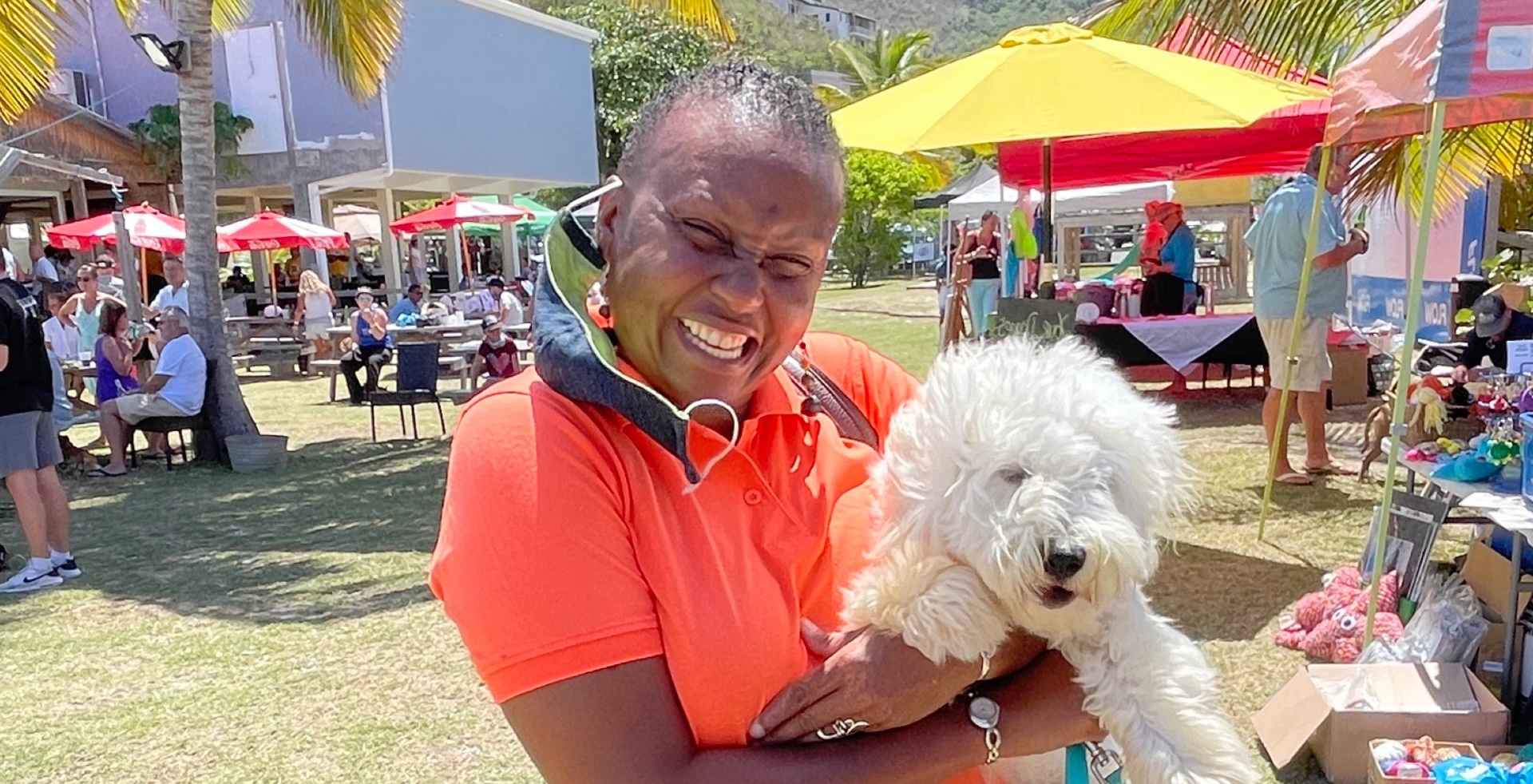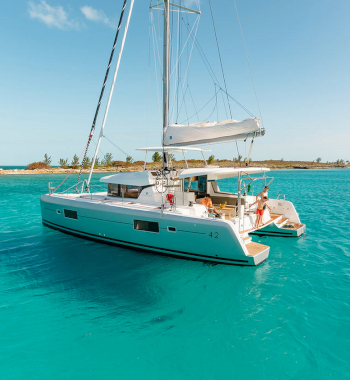Green VI’s Eco Park: BVI Waste to Wow Factor
by Jane Bakewell
Greening the BVI One Innovation at a Time
Tucked behind the H. Lavity Stoutt Community College in Paraquita Bay on Tortola, down a long meandering dirt road and past agricultural plots, one comes upon a surprising bright, red warehouse building. Large, barn-like doors painted in pale blue with huge green plant leaves have the words, “Recycle and Eco Park” emblazoned on them. You have reached an unlikely beehive of activity, known as the Green VI Eco Park, an outgrowth of Green VI, which has operated in the BVI since 2009.
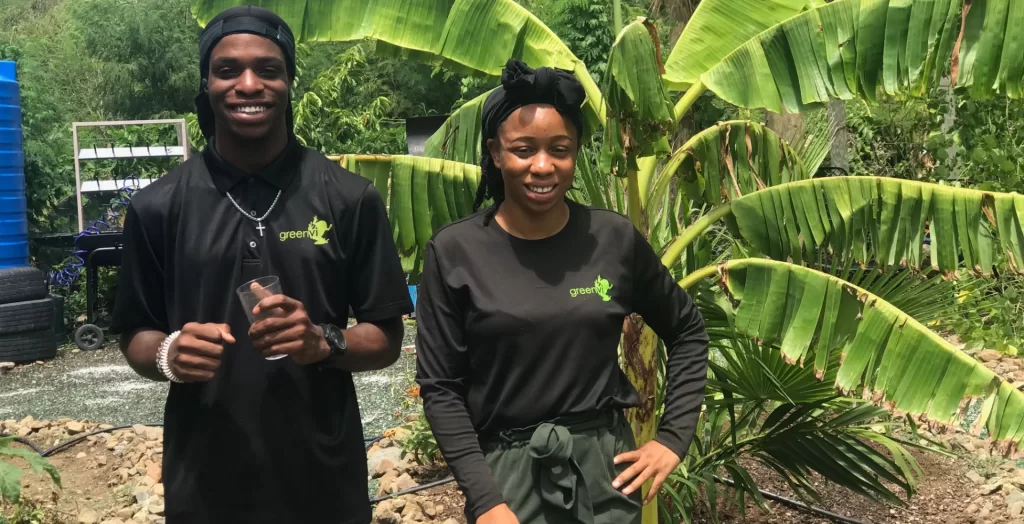
As someone who has lived here for nearly thirty years, written about “Green Projects” in the territory and volunteered for many a beach clean-up, I was amazed that I hadn’t yet toured the Green VI Eco Park. I discovered it was literally recycled from an old galvanized metal facility in 2018, under the leadership of Executive Director, Charlotte McDevitt and Regional Director, Sarah Penny. Warmly welcomed by Outreach Officer, Caden Fahie and Natasha Harrigan, the Senior Project Manager, I was immediately impressed by the professionalism and knowledge of these two young BV Islanders – we’re talking about a Gen-Xer and a Millennial here.
Both attired in their long sleeve silky black T’s with the bright Green VI logo, I was launched into a breadth of information about the vison and mission of the BVI’s premiere recycling and waste management organization. The non-profit is focused on the mantra “reduce, reuse, recycle.” They accomplish this through education, innovation, and utilizing sustainable energy and water production.
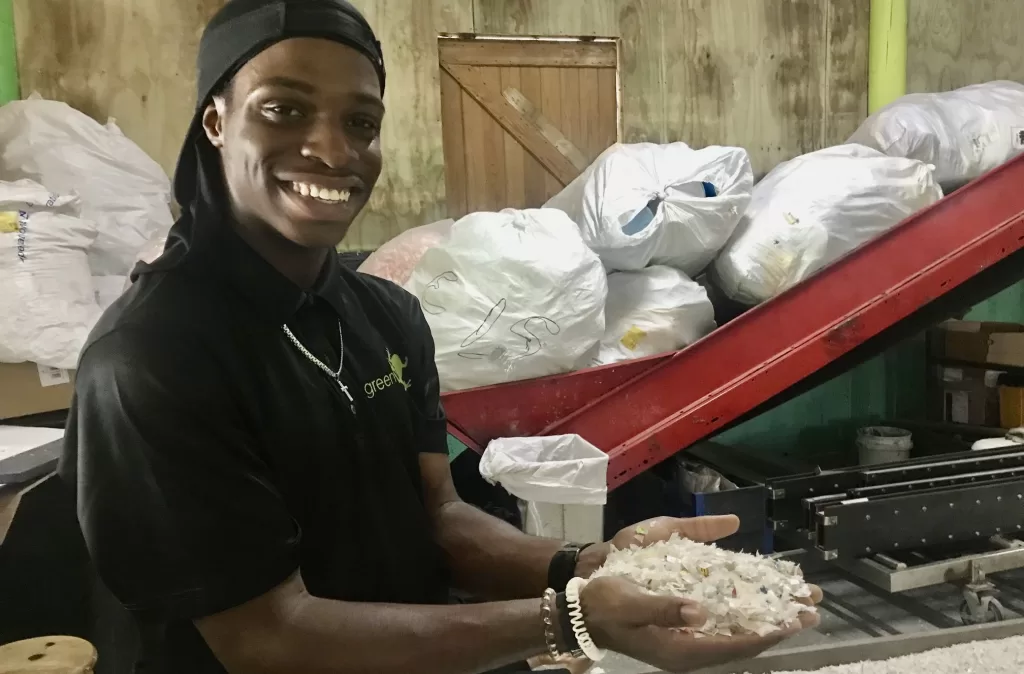
As Caden explained, the Eco Park is one of the largest Community Service organizations in the territory, with youth from grade school through high school fulfilling their Community Service classes, 60 hours annually for primary and double that for high school. The youth are also involved in the gardening wing of the park, which has a good-sized garden including a recently built greenhouse with black netting for small seedlings to sprout before planting. This is Natasha’s passion as a gardener herself, hoping others will get on the growing green bandwagon.
Caden and Natasha took me on a tour of the facility. My first “test,” as an inquiring mind, was to guess how many aluminum cans made up a compacted “bale” I was shown. I have never come close in the jelly beans -in -a- jar-game, and I was just as far off here, guessing 500, when the actual count was over forty times that at 22,000.
Big Betsy Compacts Aluminum and Plastic
From there we went to meet “Big Betsy” the industrial strength baler, that uses its crushing weights to compact aluminum and plastic into manageable forms or bales, a plastic bale equaling about 20,000 plastic units. Working with both local and international partners, including the BVI’s Department of Waste Management (DWM), a portion of the bales are shipped in a container to a Canadian company. The firm pays for the shipping, even though it takes a financial loss in the final utilization of the recycled materials. Not yet a profitable business, it’s a start.
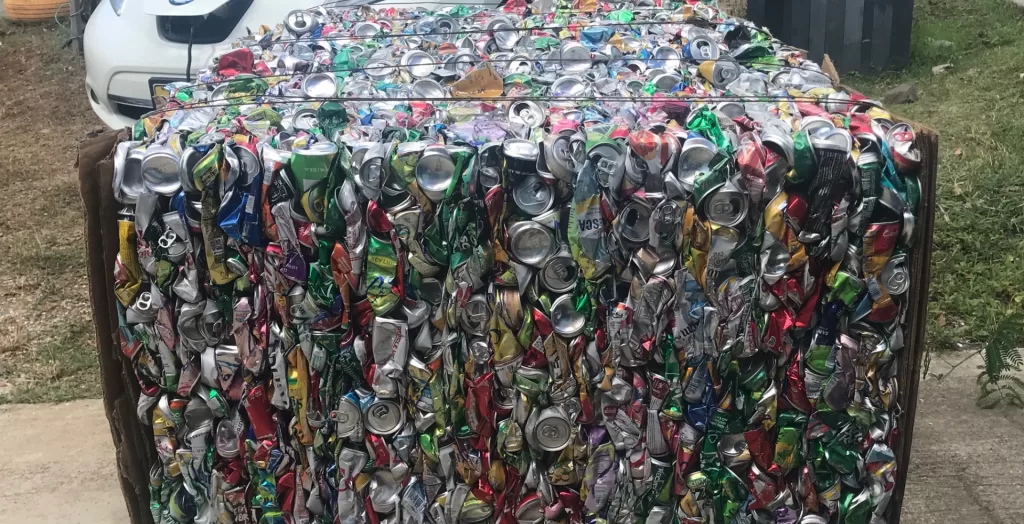
The main sorting and working area were added on to the left outside of the building under an extended covered roof. Positioned here are large numbered stalls for the plastic sorting and a long table top for the volunteer workers. A recycled tennis racket is used to pull items forward on the work service, alongside an industrial size fan to keep the workers cool. Large heavy duty plastic bags donated by the local shipping company, Aeropost, contain the sorted recyclables that include plastics identified by their break-down durability from numbers one to seven. A “number one” being a “scrunchable” plastic water bottle and a “number two,” a hard plastic water gallon jug or laundry detergent bottle up to “number seven,” a mixed plastic category. Most plastic bottles have their recycling number code, indicating the type of plastic, on the bottom or side of the bottle within a triangle of arrows.
The relatively small glass crusher sits in one corner of the covered area to crush glass as both recycled ground cover for paths and also the aggregate. These products are utilized by local green businesses like Greencrete BVI for use in cement and glass counter tops and Block Works VI for concrete block formations. On the other hand, the huge glass crusher at the Pockwood Pond Waste Disposal Facility operated by DWM, can crush one ton of glass in an hour.
BVI’s largest Community Service Organization
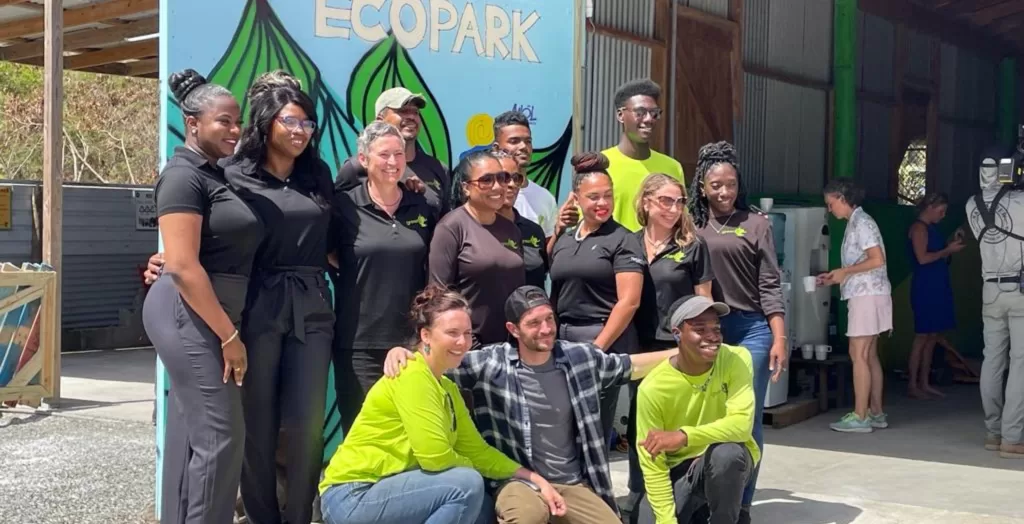
By now, touring the Green VI Eco Park, I was beginning to get a little thirsty. This was a perfect segue to the “Water from Air Condenser.” Looking like an office water cooler, minus the plastic jug on top, this electric powered machine was taking water from the humidity in the air through condensation coils, seven filters of purification and a final UV filter to make my glass of water. This unit makes about eight gallons a day based on the then 64 percent humidity. And the water was definitely better than bottled.
Another “Green” partner sharing the space under the “Big Top” is VI Plastics, a recycling company that utilizes the breakdown of plastics to form “Polywood” a durable component for furniture and other uses. Once the plastic is broken into chip size, it is fed through an “Extruder,” a machine that can get to very high temperatures melting the plastic into a liquid that is then poured into various lengths of forms until cooled. Polywood is as versatile as the imagination for its use and makes for weather-resistant, durable outdoor furniture.
Several partners including the Ministry of Education, the Red Cross and the HLSCC College have come together to implement what is called “The Smart School Project.” Polywood from the Eco Center is built into rectangular raised bed forms to be used in school gardening projects, teaching the youth about sustainable gardening and recycling. Twelve schools are earmarked for implementing this program in the coming years.
As the “circular economy,” which Caden often referred to, goes around, many in the BVI will benefit from the innovative ideas coming out of the Eco Park both on Tortola and another facility located on Virgin Gorda. I highly recommend a tour while on island and consider supporting a non-profit organization that “keeps the BVI beautiful!”
For more about Green VI go to their website:
For this and other activities in the BVI go to

